Many business owners struggle with choosing the right file format for their logos. Should a logo be a PNG? This common question pops up when saving logo files for different uses. PNG files work great for websites and social media, but they have limits for print materials.
We’ll show you three big benefits and two drawbacks of PNG logos, plus where to use them best.
Key Takeaways
PNG logos work best for digital platforms like websites and social media due to their transparency support and ability to display 16 million colors clearly.
While PNGs maintain high image quality through lossless compression, they create larger file sizes than JPEGs and can slow down website loading times.
PNG files aren’t good for print materials because they pixelate when scaled up, unlike vector formats like SVG that stay sharp at any size.
For digital branding, PNG logos excel in presentations, email signatures, and social media profiles because they blend seamlessly with any background color.
The format supports both 24-bit RGB and 32-bit RGBA color spaces, making it ideal for displaying complex logos with fine details on digital screens.
Table of Contents
What is a PNG File Format?

PNG (Portable Network Graphics) stands as a powerful raster image format perfect for digital graphics. This format supports 16 million colors and keeps images crystal clear through lossless compression.
I’ve used PNG files daily in my web design work, and they excel at maintaining sharp edges and crisp text. The format works great with most image editing software like Photoshop, GIMP, and web browsers.
PNG files shine brightest for logo mockup projects and detailed online graphics. The format stores data without losing quality each time you save it.
My experience shows that PNGs handle transparency better than other formats, making them ideal for logos on various backgrounds. The files stay sharp on websites, social media, and digital presentations while keeping their original quality intact.
Key Features of PNG for Logos
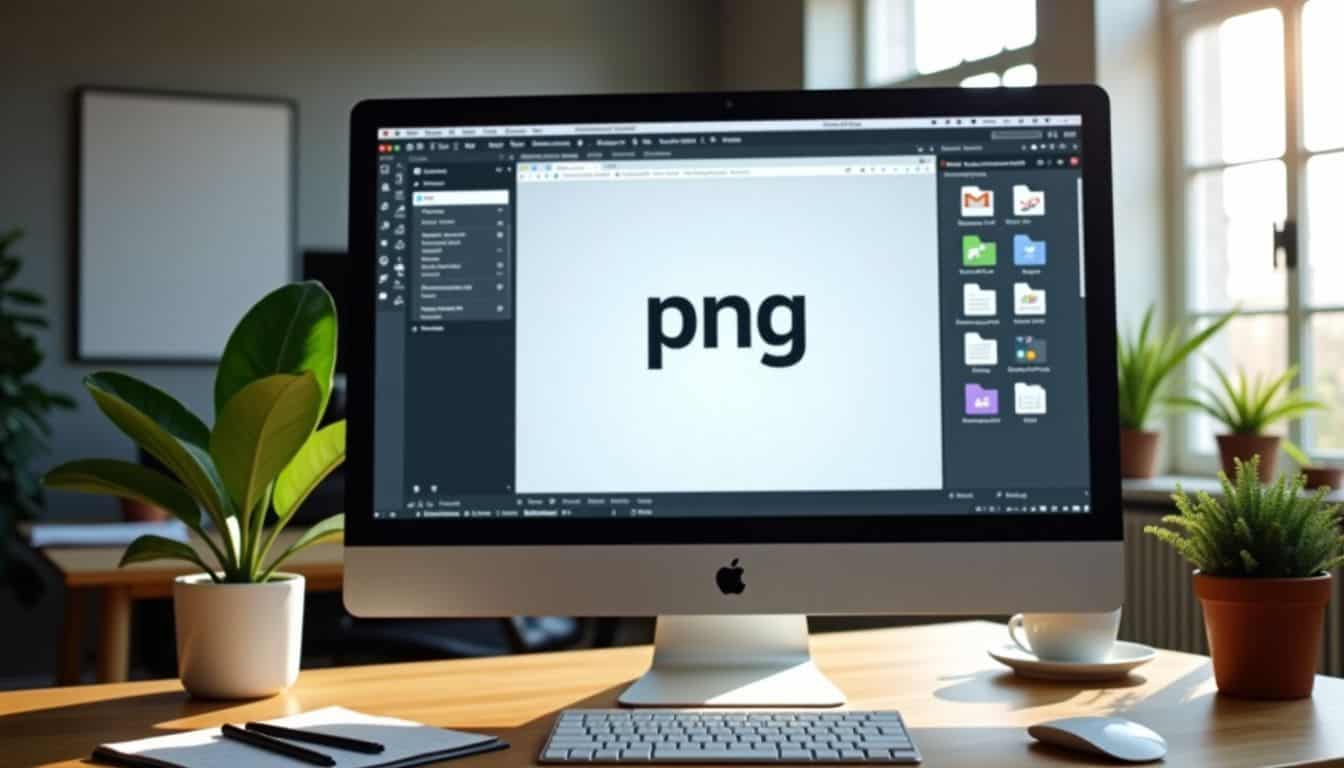
PNG files pack three vital features that make them perfect for digital logos. These features help brands shine online through clear images, sharp details, and smart file handling.
Transparency Support

Transparency stands as a key strength of PNG logos in digital design. The format supports alpha channels, letting logos float on any background without white boxes or edges. Your logo stays crisp and clean on websites, social media posts, and digital presentations.
The transparent background makes logos blend perfectly into any surface or color scheme.
A transparent PNG logo is like a chameleon – it adapts to any digital environment while maintaining its identity.
PNG logos excel at displaying millions of colors while keeping sharp edges intact. Digital platforms love PNG files because they maintain image quality across different screen sizes.
The format handles both simple and complex designs with equal skill. Graphic designers pick PNG for its ability to show fine details in logos without losing clarity. The transparent feature helps brands keep their visual identity strong across all digital touchpoints.
High-Quality Resolution

PNG files excel at producing sharp, clear graphics with superior color depth. The format supports 24-bit RGB and 32-bit RGBA color spaces, making logos look crisp on digital screens.
Graphic designers prefer PNG for its ability to display millions of colors while keeping edges smooth and text readable.
PNG’s lossless compression helps maintain image quality without data loss. This feature proves vital for logos that need to stay sharp across different digital platforms. The format handles both simple and complex designs with equal precision, preserving fine details that matter in professional branding.
Digital images stay clear even after multiple saves or edits, unlike some other formats that degrade over time.
Scalability for Digital Use

Digital screens show logos at different sizes. A PNG logo starts to look fuzzy or pixelated if you make it bigger than its original size. This happens because PNG files use raster graphics, which store images as fixed pixels.
Like the Apple logo, many brands need their logos to stay sharp across various screen sizes.
Raster formats limit how much you can stretch a PNG logo. The image quality drops fast if you zoom in or display it on large screens. SVG files work better for scaling because they use math to draw the image instead of pixels.
Smart designers keep both PNG and vector versions of logos ready for different digital needs.
When to Use a PNG for Logos
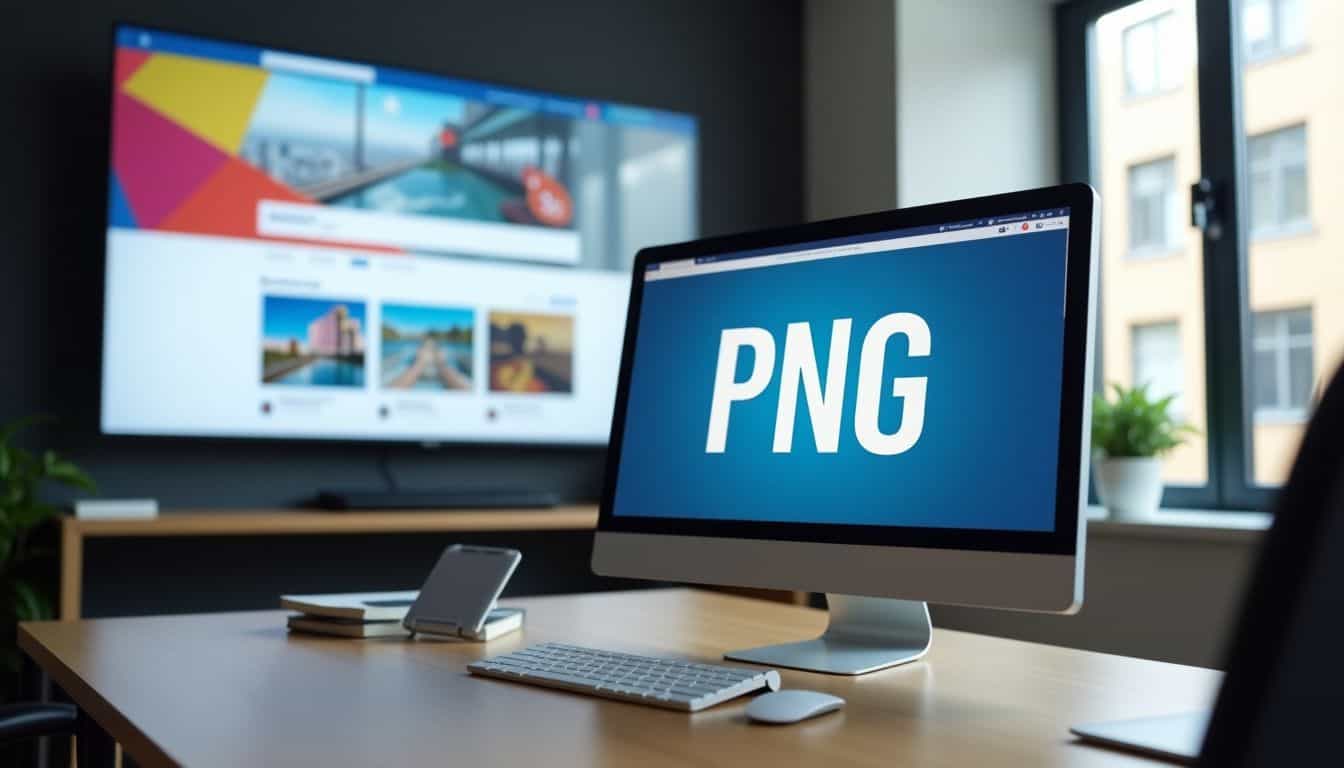
PNG logos shine on digital platforms, from websites to social media, where crisp images and clear backgrounds make your brand pop – read on to learn more about making your logo stand out in the digital world.
Digital Platforms (Websites, Social Media)
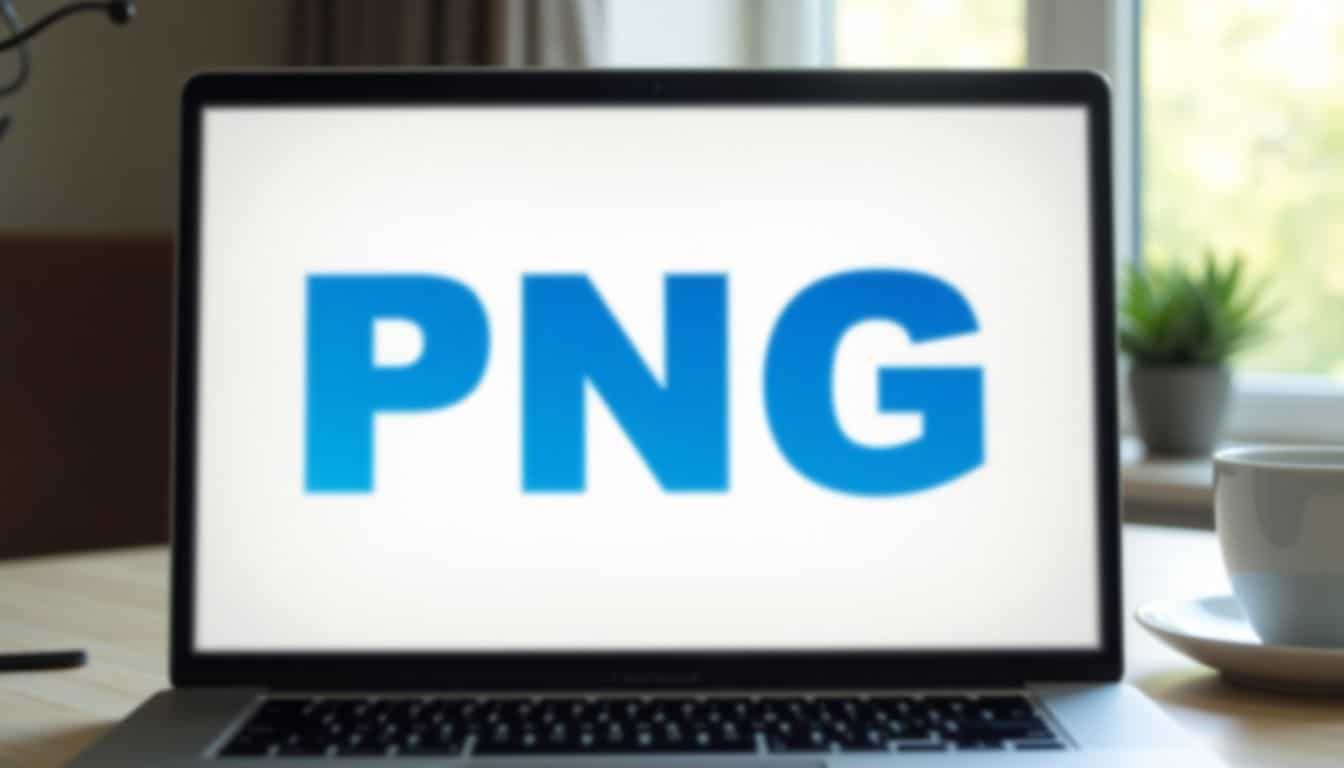
PNG files shine on digital platforms like websites and social media. These files support clear backgrounds, making logos pop against any color scheme. Your brand needs crisp, clean images across Facebook, Instagram, and LinkedIn.
PNG logos fit this need perfectly with their sharp edges and high quality.
Social media platforms love PNG files for their mix of small size and good looks. A PNG logo stays clear on retina screens and mobile devices without eating up storage space. The format works great for website headers, favicons, and profile pictures too.
Digital platforms need logos that load fast but still look amazing – PNG delivers both. Many top brands use PNG files for their online presence because they display well on any screen size.
Presentations and Online Branding

PowerPoint slides shine with PNG logos. The clear backgrounds make logos pop on any slide color or design. Social media profiles, email signatures, and digital documents need sharp logos too.
A PNG logo stays crisp across these platforms, making your brand look sharp and professional.
Your brand deserves pixel-perfect clarity in every digital space.
Digital branding needs flexible logo files that work everywhere. PNG logos fit nicely into websites, mobile apps, and online ads without losing quality. The format keeps text sharp and colors true, which matters for consistent branding.
I’ve used PNG logos across hundreds of digital projects, and they always display perfectly on screens big and small.
Limitations of PNG for Logos
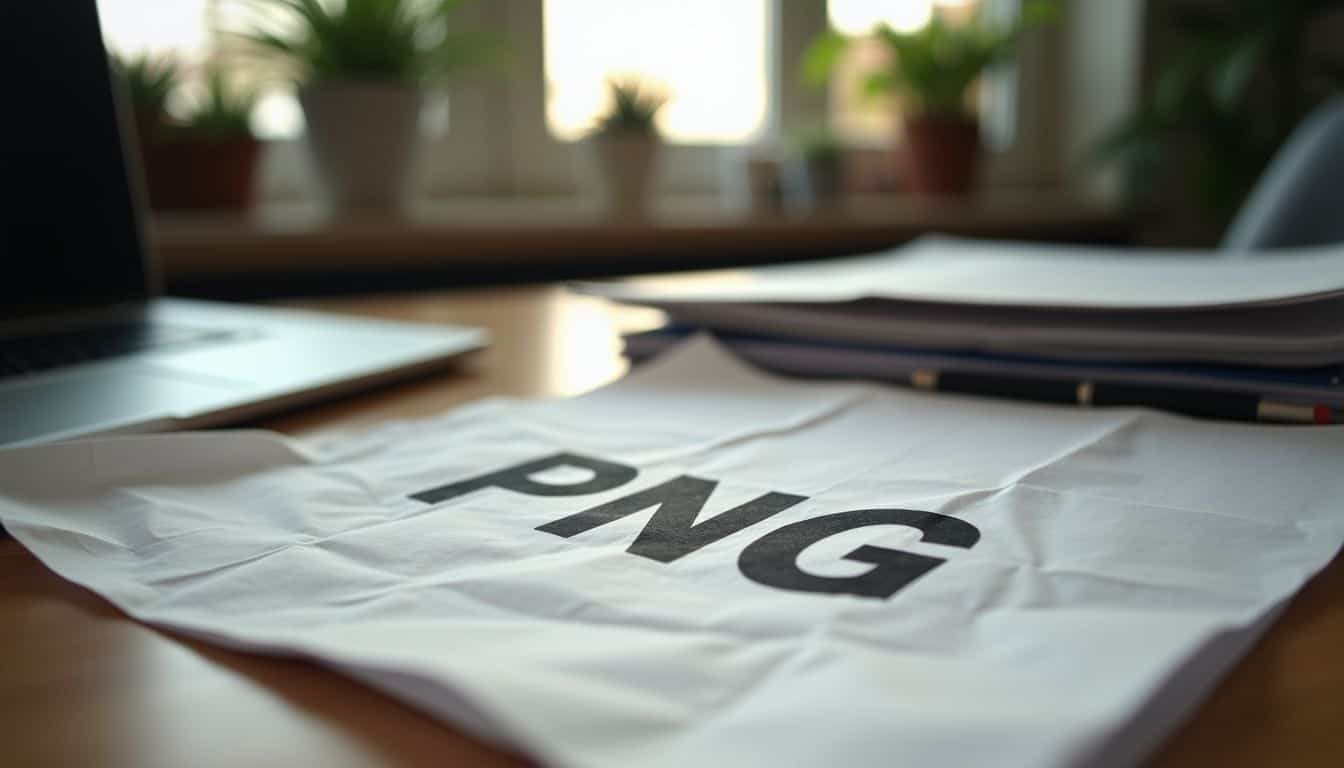
While PNGs shine in digital spaces, they face limits in print work and storage space – but stick around to learn the full story of what makes this format tick.
Not Ideal for Printing
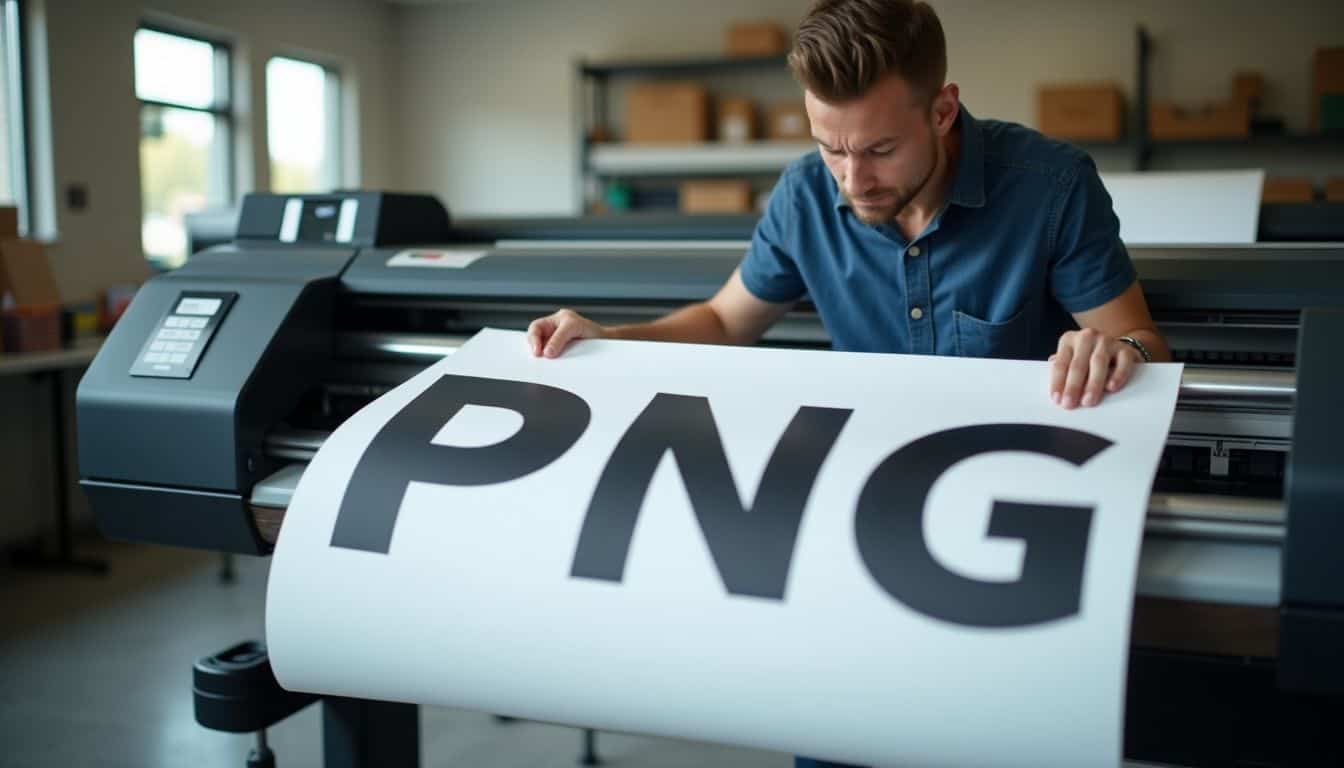
PNG files create major headaches for print jobs. These files lack the crisp edges needed for professional printing, especially in large formats like banners or signs. Print shops often reject PNG logos because they pixelate during scaling, making them look blurry and unprofessional.
Vector formats work better for print materials since they maintain sharp details at any size.
The print quality issues stem from PNG’s raster-based structure. Raster files store image data as fixed pixels, which causes quality loss during resizing. Professional printers need vector files, such as SVG or EPS formats, to produce clear logos on business cards, brochures, and other marketing materials.
The next section explores another key drawback of PNG files – their larger file sizes compared to other formats.
Larger File Sizes Compared to Other Formats

File size matters a lot in digital graphics. A PNG logo takes up more space than its JPG cousin because it keeps every detail intact. The lossless compression in PNG format saves all image data without losing quality.
This makes PNG files bigger than JPGs, which drop some image details to save space.
Digital storage costs money, and bigger files load slower on websites. Large PNG logos can slow down web pages and eat up server space. JPG files load faster because they use lossy compression to make smaller files.
Yet, many designers still pick PNG files for logos. They value the perfect image quality over file size, especially for digital branding that needs clear, crisp graphics.
Comparing PNG with Other File Formats

Let’s check out how PNG stacks up against JPEG and SVG formats for your logo needs – each has its own sweet spots for different projects!
PNG vs. JPEG
PNG and JPEG formats serve different purposes in digital imaging. Each format brings unique strengths to logo design and web graphics.
| Feature | PNG | JPEG |
|---|---|---|
| Compression | Lossless – maintains original quality | Lossy – some quality loss during compression |
| File Size | Larger files | 10:1 compression ratio, smaller files |
| Transparency | Full alpha channel support | No transparency support |
| Best Uses | Logos, graphics with text, screenshots | Photos, complex images, web graphics |
| Color Depth | Up to 48-bit true color | 24-bit color |
| Web Performance | Slower loading due to size | Fast loading, ideal for web |
| Quality Loss | Zero loss on saves | Quality degrades with each save |
My experience shows PNGs excel at preserving sharp edges and text clarity. JPEGs work better for photographs and gradient-heavy images. Digital designers must balance quality needs against file size constraints.
PNG vs. SVG
SVG and PNG formats serve different purposes in logo design. Each format excels in specific use cases.
| Feature | PNG | SVG |
|---|---|---|
| File Type | Raster-based | Vector-based |
| Scalability | Limited – loses quality when scaled up | Infinite scaling without quality loss |
| File Size | Larger files for complex images | Smaller files for simple graphics |
| Color Support | Rich color range, good for gradients | Basic colors, limited gradient support |
| Best Uses | Digital displays, web graphics | Logos, icons, animations |
| Browser Support | Universal | Modern browsers only |
| Editing | Limited post-save editing | Fully editable code structure |
| Resolution | Resolution-dependent | Resolution-independent |
Technical tip: SVGs work great for simple logos with solid colors. PNGs excel at complex images with intricate color variations. My experience shows SVGs load faster on websites due to their smaller file sizes.
People Also Ask
What’s the difference between PNG and other file types for logos?
PNG is a raster file format, while formats like EPS and SVG are vector graphics. Vector images stay sharp when scaled up, but PNGs can get blurry. Other options include JPEG files, GIFs, and WebP formats.
Why do designers prefer vector graphics for logos?
Designers use vector software like Adobe Illustrator or Affinity Designer because vector graphics are scalable. They work great for digital printing and can be saved as PDF files or EPS files without losing quality.
When should I use PNG format for my logo?
Use PNG when you need a logo for websites or digital use. It works well for word documents and supports transparent backgrounds. It’s also good for clip art and digital photography needs.
Can I edit text in a PNG logo?
No, you can’t edit text in PNG files like you can with vector graphics. For text editing, you’ll need the master file in vector format, which lets you change fonts and colors (including Pantone and CMYK).
How do compressed PNG files compare to other formats?
Compressed PNG files keep better quality than JPEG files or GIFs. While they’re larger than WebP or compressed JPEGs, they maintain crisp edges and support transparency, unlike Tagged Image File Format (TIFF).
What’s the best way to save my logo for different uses?
Keep your master file as a vector graphic in Adobe Illustrator or PDF format. Then save copies as PNG for web use, EPS for printing, and PDF files for sharing. This gives you files that work with Adobe Acrobat Reader and other programs.
References
https://www.adobe.com/creativecloud/file-types/image/raster/png-file.html
https://imagesuggest.com/blog/png-vs-jpeg/ (2021-06-12)
https://logo.com/blog/transparent-logos
https://looka.com/blog/transparent-logo/ (2024-09-19)
https://www.gumlet.com/learn/svg-vs-png/
https://looka.com/blog/logo-file-formats/
https://meancreative.com/understanding-your-logo-file-formats/
https://help.baseline.is/en/article/why-png-is-not-recommended-for-logos-1pseqfi/ (2023-05-29)
https://medium.com/@g.glasgow91/choosing-your-graphics-wisely-svg-vs-png-9b4655c77c0b
https://kinsta.com/blog/svg-vs-png/ (2021-12-15)
